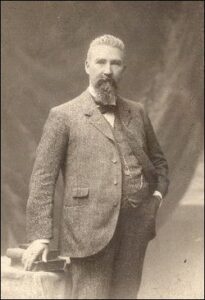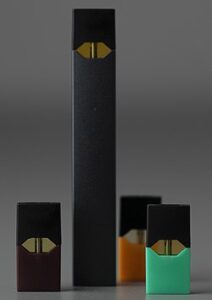Today we are going to review five different case studies done on how tobacco companies have attempted and succeeded at shouting down vape companies. Some with valid reasoning and others to knock out the competition. Each Case study will have its sources found below it. Thanks for reading.
Case Study – 1

Imperial Brands’ patent ambush on early e‑cigarette makers (2013‑2015)
In 2013 Imperial Tobacco (now Imperial Brands) bought a portfolio of e‑cigarette patents from Dragonite International; its co‑founder Hon Lik is credited with inventing the modern e‑cigarette (the first inventor for the e-cigarette was actually a guy named joseph Robinson).
Then they decided to file at least eight U.S. lawsuits in March 2014 against vape‑upstarts including NJOY, 21st Century Smoke and Vapin Plus. On what grounds would they do this? Well, Imperial argued that their “metal tubes that heat nicotine‑laced liquid” were being copied. So, after a year of legal carpet‑bombing, Fontem (the subsidiary who filed the cases) reached settlements in late 2015.
The result granted Japan Tobacco and other defendants a global licence to Fontem’s patents. A good example of how big tobacco companies with deep pockets cut short pioneers of the industry and then offered them licensing “protection” at a fee. A well-played move.
Sources are:
Case Study – 2

R.J. Reynolds sues small vape sellers for using Camel and Salem names (2012‑2013)
Just when vaping startup companies where booming, Reynolds Innovations (a division of R.J. Reynolds) decided to sue people who dared to invoke its famous brands. In 2012 the company filed a trademark infringement suit against SAS Technologies, accusing the firm of using Camel and Winston names on e‑liquids.
In all fairness, this should be a standard for companies with large, branded names. To put your own products under a major corporate name such as Camel, tells people you’re looking for trouble.
A year later Reynolds sued vape entrepreneur John Thompson for selling liquid nicotine under the Camel and Salem labels. According to Convenience Store News, the case settled in July 2013; Thompson agreed to pay an undisclosed sum and stop using the trademarks.
In this case scenario, the vape entrepreneur was in the wrong, selling liquid nicotine under protected brand labels (Camel, Salem). The reason for it, to increase product sales. A dirty way to play the game. The message was clear: if you even whisper “Camel” near a bottle of vape juice, expect a court summons.
Here is the cherry on top. Simultaneously, Reynolds was preparing to launch its own Vuse e‑cigarette. Nothing says “embrace innovation” like suing your future competitors for doing the thing you’re about to start doing yourself. We all know how popular Vuse e-cigarettes release was.
Sources are:
Case study – 3

Lorillard buys blu eCigs for $135 million (2012)
Here we have a classic power move case, where both sides of the party got what they wanted. Lorillard being the first big U.S company to put their money where their mouth was (or so to say). Founded in 1760 and produced brands like Newport, Maverick, Old Gold, Kent and True. In April 2012 it announced that its subsidiary Lorillard Tobacco Co. would acquire Blu eCigs for $135 million in cash.
Taking an opportunity with both hands to own a major tobacco and e-cigarette company. A finger in two pies is better than one. Lorillard’s CEO explained that e‑cigarettes offered “many of the benefits of other smokeless products” while feeling familiar to adult smokers.
In other words it was good investment, thanks to it being less harmful than tobacco like (chewing tobacco, snus, nic pouches) yet it has the same look and effect as cigarettes do, so adult smokers would be happy to make the compromise.
The company promised to keep Blu as a separate business with its own management and to use Lorillard’s regulatory clout to expand distribution. A kind gesture to the employees I’m sure. Blu’s co‑founder Jason Healy called the deal “an extremely positive step” that would give the young company resources to expand research and distribution.
This buy‑out signaled that the cigarette giants were tired of litigating from the sidelines; they planned to own the category outright. A position in which most tobacco companies where in and were taking advantage of.
Sources are:
Case Study – 4

Altria’s Juul gamble and the antitrust backlash (2018‑2023)
2018: Altria (the company behind Marlboro) spent $12.8 billion to buy 35% of Juul, which was the hottest e-cigarette brand at the time. That deal valued Juul at a crazy $38 billion.
They wanted a piece of e-cigarette market from one of the biggest vaping companies in the U.S at the time (Juul). Giving them more access to customers and better distribution.
2019-2020: Losing billions by doing the right thing.
-
Juul quickly got blamed for a spike in teen vaping, which brought massive regulatory heat.
-
The FTC (competition watchdog) accused Altria and Juul of cutting a shady deal: Altria shut down its own vape brand (MarkTen) and promised not to compete, in exchange for that 35% Juul stake. To regulators, this looked like collusion, instead of competing, they were teaming up.
-
Juul’s value tanked, Altria’s $12.8B stake shrank to just $4.2B on paper.
Where those teens not going to buy vaping products anyway, despite the brand? How could such a good deal between two major companies go so sour? How very controversial
2023: Altria finally dumped Juul. They traded their remaining stake for some Juul patents and moved on, buying another vape company (NJOY) for $2.75B instead.
Sources are:
Case Study – 5

Patent wars and truce: BAT vs PMI and Juul vs NJOY (2024‑2025)
Two former allies we just spoke about, battling it out through the years. Altria (now owner of NJOY) and Juul, fighting over patents. International (PMI) and British American Tobacco (BAT) announced a global patent settlement.
Basically, ending the suing war between tobacco and vape companies that have been running rampant for years. The eight‑year truce allows each company to keep innovating, a cease‑fire motivated by mutually assured destruction after years of multi‑front litigation.
2025 January, the U.S. International Trade Commission sided with Juul and ordered a ban on imports of Altria’s NJOY ACE devices because they infringed Juul’s patents. Altria was not winning this war since 2019. The ruling forced Altria to halt NJOY ACE sales and take a hefty write‑down; analysts expect the company to redesign the product and relaunch in 2026.
Talk about being persistent, yet maybe there where major breaches in copies of equipment being used for speeding up production or quality. The patent wars show how Big Tobacco’s vaping ambitions have devolved into a circular firing squad: they now spend as much time suing each other as they do selling nicotine.
Sources are:
- Media – Press Details | PMI – Philip Morris International
- Juul wins order banning US imports of Altria vaping devices | Reuters
- Patents Wars – Tobacco Insider
Final Say
One cannot pick a side easily. On one hand we have tobacco companies buying out Vape companies for fair prices and keeping them as separate business entities, allowing for consistency and fair trade. Then we have tobacco companies cutting corners and purchasing shares of vape companies to copy their styles/models.
We have Vape companies copying big corporate tobacco names to increase sales and we have both sides attempting to create shady deals that benefit both parties simultaneously, with no mercy for other companies to compete. All stories to be taken with grain of salt. As the true story is always going to be different from the one you read online.


